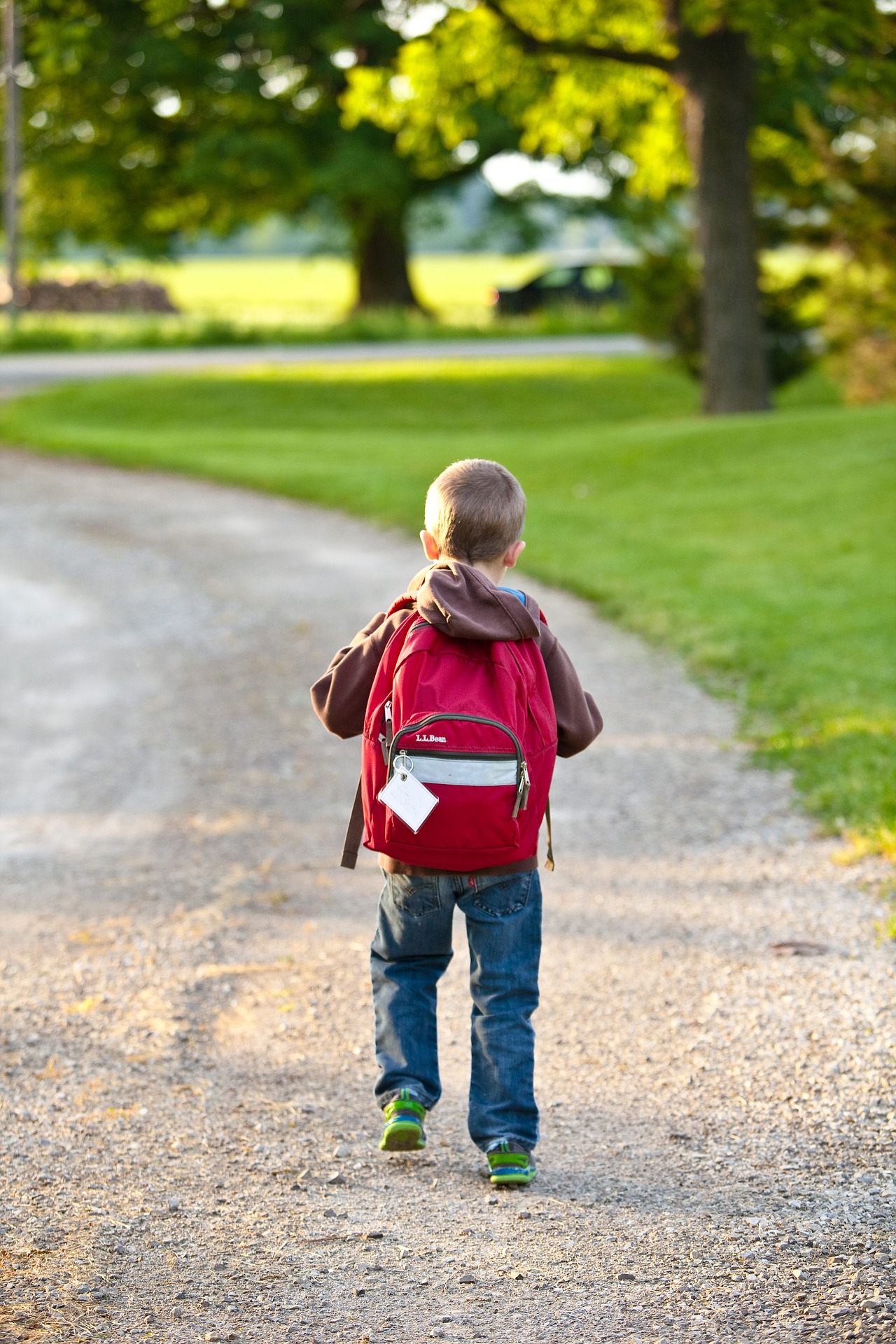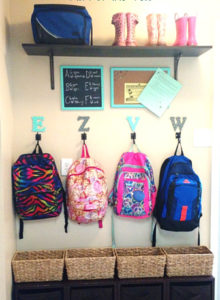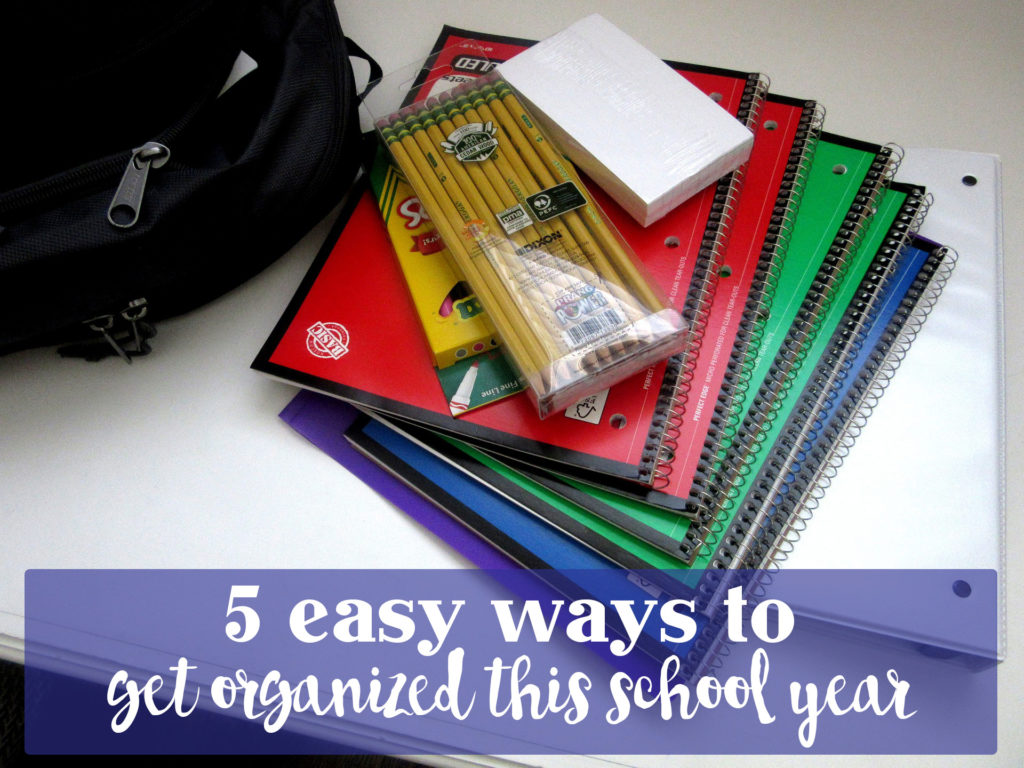
Pencils and papers and binders, oh my! Below are some organization ideas to get you started this school year.
Everything should have its place in the backpack.
Whether you use one binder with tabs or an individual pocket folder, it’s important to designate a place for each subject. This prevents losing papers in the shuffle. You can take your folders to the next level by color-coding them! Don’t forget to declutter your student’s backpack every night to keep things organized.
Everything should have its place in the house.
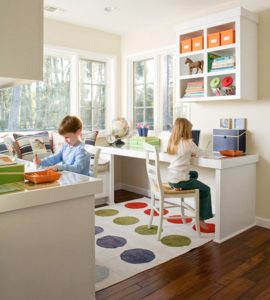 Establish a routine for all things school related. Designating a distraction-free area as the “homework zone” can help your child stay focused when completing schoolwork and it can also help you keep track of all the necessary materials your kiddos need for projects. Most importantly, these organization ideas will also prevent late night runs to the store for glue sticks and markers.
Establish a routine for all things school related. Designating a distraction-free area as the “homework zone” can help your child stay focused when completing schoolwork and it can also help you keep track of all the necessary materials your kiddos need for projects. Most importantly, these organization ideas will also prevent late night runs to the store for glue sticks and markers.
Use a transfer folder you check every night.
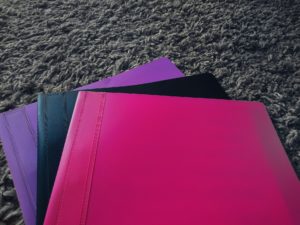
This folder’s sole purpose is to transfer incoming and outgoing papers. The pocket on the left is always for important incoming papers—field trip permission slips, t-shirt order forms or noteworthy information from the school. The right pocket is always for outgoing papers—signed syllabus, lunch money or permission slips. You can also apply these organization ideas to subject-specific folders. The left pocket is for homework that needs to be completed. The right pocket is for homework ready to be turned in.
Practice using an assignment notebook early.
As soon as your children are old enough to write, teach them how to use an assignment notebook to keep track of their responsibilities. If your student gets in the habit of keeping a list of tasks early, they are more likely to stick with it as they get older. Checking items off the list is also a satisfying way to keep track of all they accomplished that day. There are some great options out there for kids of all ages. Try this student planner for elementary school kids. Start your younger kids on a daily checklist
to get them used to keeping track of their responsibilities from an early age.
Add it to your calendar. 
At the beginning of each year, take 20 minutes and peruse the school calendar. This is usually posted on the school website. Add relevant dates to your family calendar. This can be an actual wall calendar or the calendar you keep in your phone. Never used Google Calendars before? Now is a great time to give it a try. You can sync this calendar with all your devices. In addition, you can share it with other people so everyone in the family is in the know. Check out this quick tutorial to get started.

